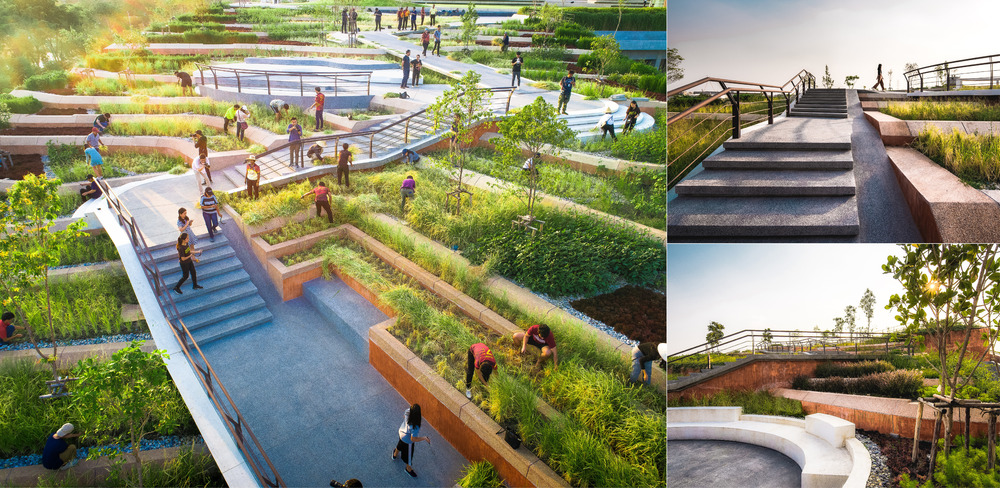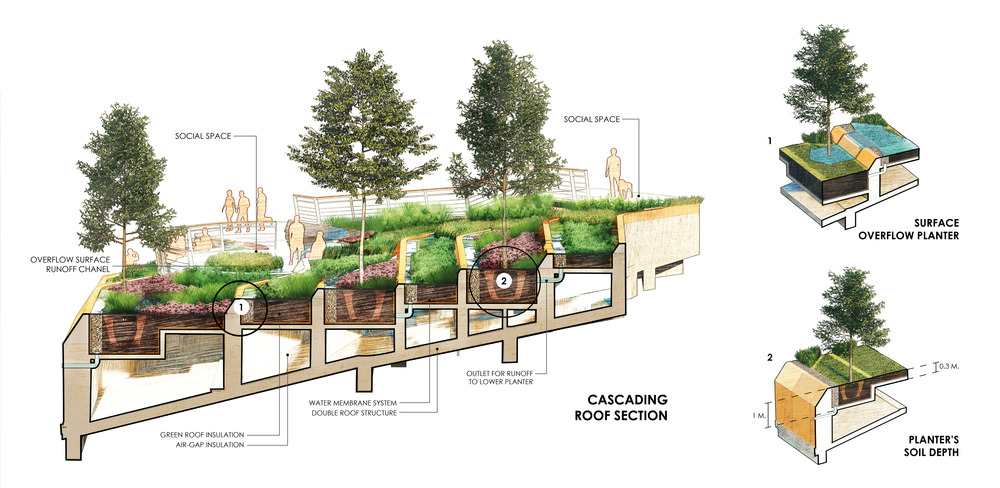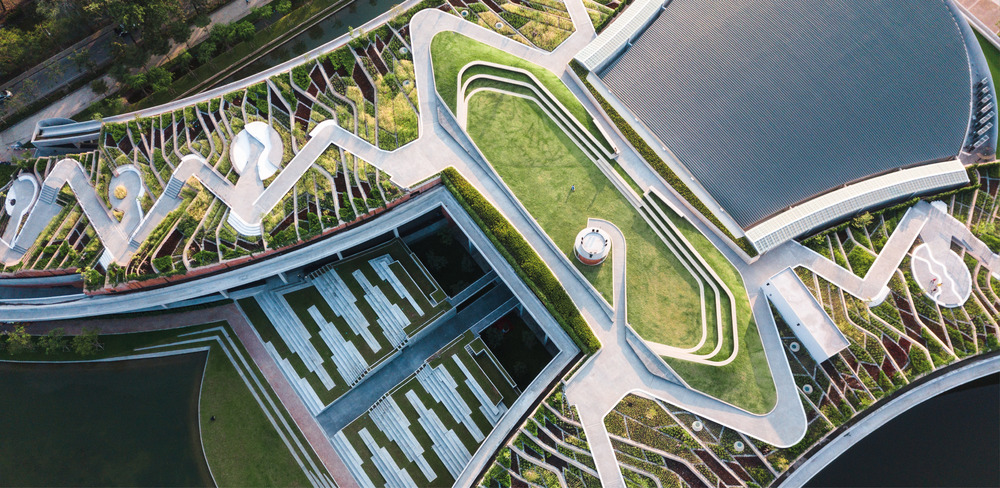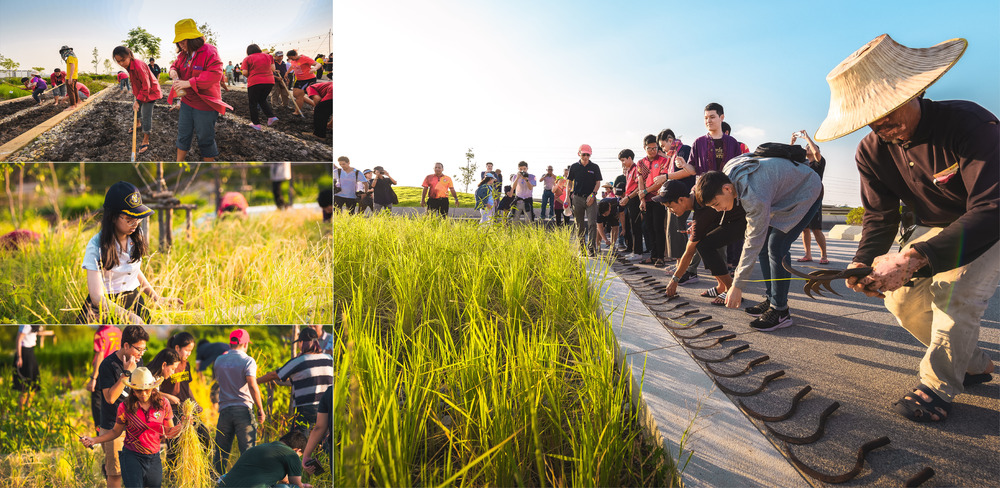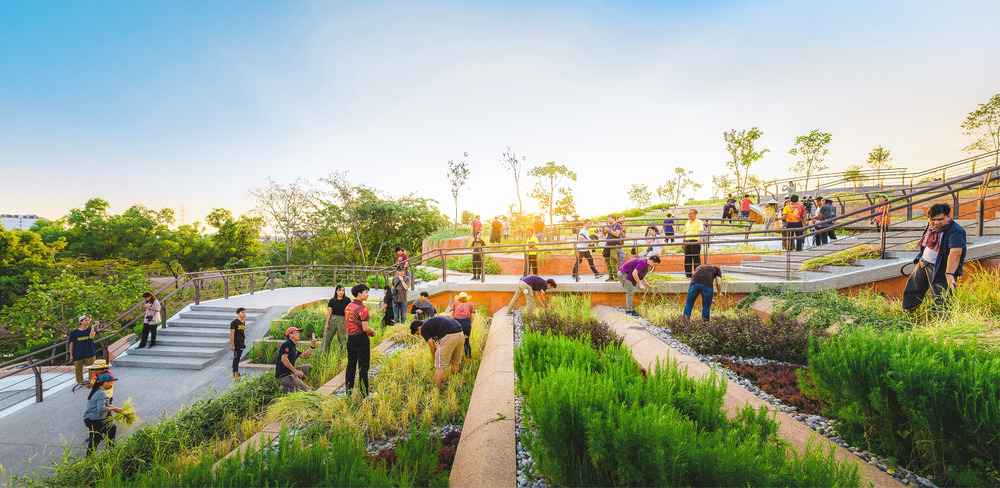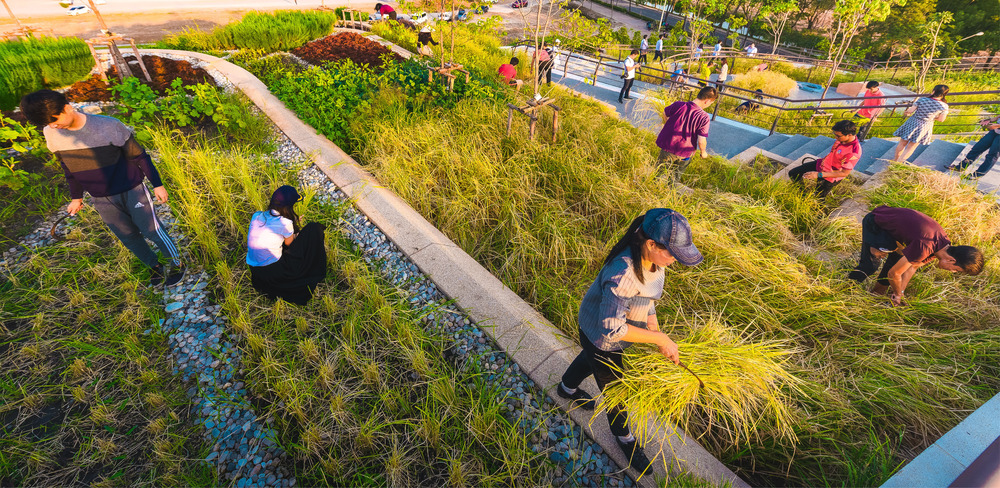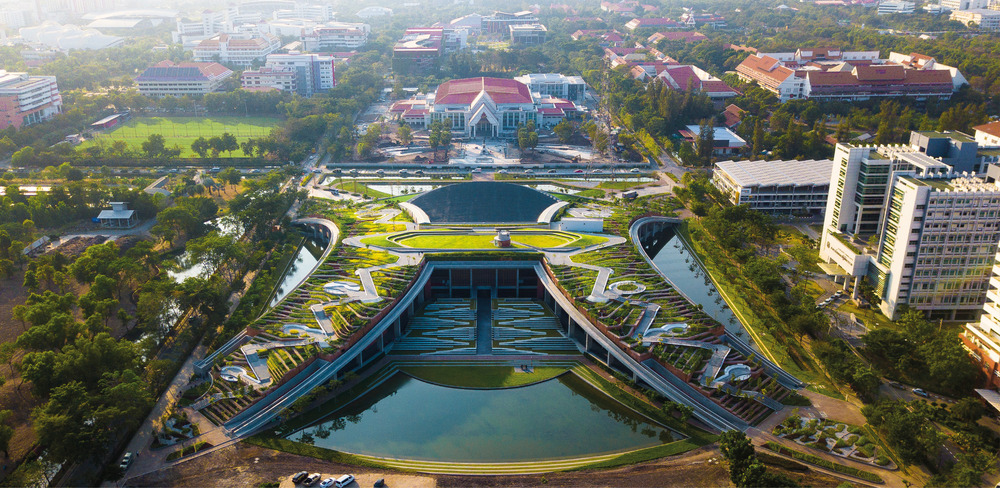
The scenes of panic-buying we witnessed around the world earlier this year brought on by the COVID-19 pandemic has further highlighted the insecurity we have towards food production.
That is why a project like LANDPROCESS’ Thammasat Urban Rooftop Farm (TURF) in Thailand’s capital Bangkok is a timely one worthy of further analysis.
“To prioritise global food security, and the health of our people and the environment, cities must utilise neglected spaces to efficiently and sustainably produce food.”
This was the premise behind the project, where 236,806ft2 of unused rooftop space of a building at Thammasat University has been repurposed to become an organic farm.
In addition to more than 40 edible species of plants, including rice, indigenous vegetables and herbs and fruit trees, there is a solar-panel section, public spaces and four retention ponds.
All this is beautifully landscaped, with the most striking part being four cascading roof sections, each of which is styled after the earthwork of traditional rice terraces commonly found throughout Southeast Asia.


The mountain-shaped architecture is no coincidence – it is a nod of respect to the university’s former director Dr. Puey Ungphakorn.
“Puey” translates into “mound under the tree”, or “nourishment” in Thai.
At its zenith is a large, open-air sky amphitheatre from which a 360-degree panorama of the surroundings can be enjoyed.
In fact, the bird’s eye view of TURF reveals it is shaped like the capital letter H with the amphitheatre forming the horizontal line.
“The architecture symbolises the university’s long-standing representation of egalitarianism and democracy,” describes LANDPROCESS.
“Divided into four equally-accessible sections, each chamber represents a core element of democracy: people, liberty, equality and fraternity.”


Beside the sky amphitheatre is a section for the solar panels, capable of producing up to 500,000 watts per hour to irrigate the urban farm and power the building beneath it.
From there, the farm descends down to ground level with each of the four arms a terraced composition of crops, social spaces, outdoor classrooms and zig-zag staircases; not a single inch of space is wasted.


In total, TURF provides up to 20 tons (80,000 meals) of organic food each year; any waste is turned into compost to fertilise the crops for the next growth cycle.
Another benefit of the landscaped rooftop is the absorbing, filtering and slowing down of surface runoff 20 times more efficiently than conventional concrete rooftops.
This is made possible by the formation of unique clusters of micro-watersheds along the terraces.
The rainwater eventually flows into four retention ponds tucked between the arms, capable of holding up to 3,095,570 gallons of water in total.
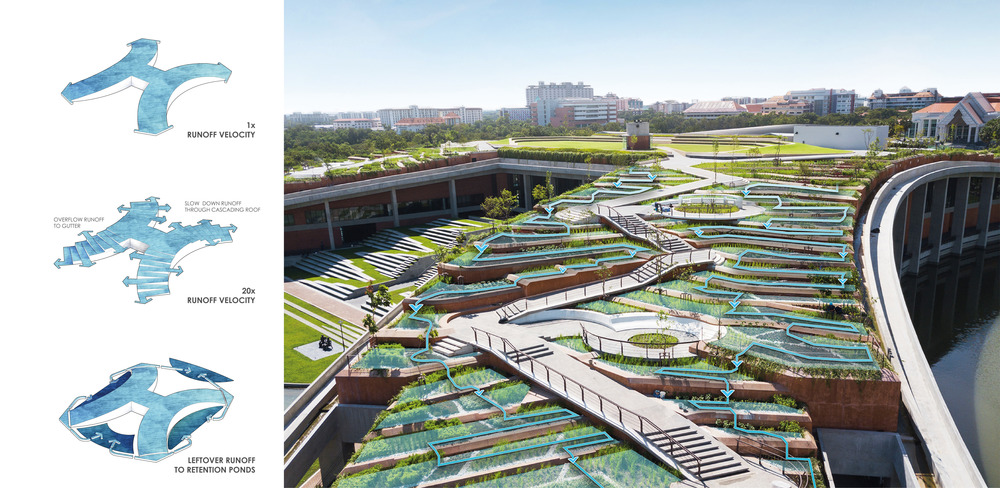
Below the sky amphitheatre is another terraced one, accessible from the ground.
Not only does it act as the entrance to the building TURF is on, but it also has life-sized sculptures of the University’s two founders to “bring back their presence and the principles of the institution’s democracy and sustainability”.
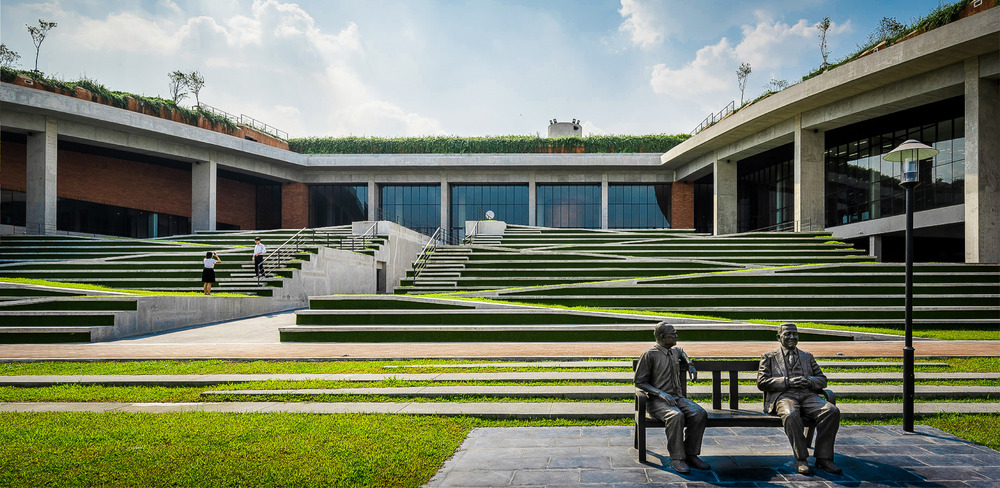
Year-round workshops on sustainable agriculture will be held at TURF for the 40,000 campus residents and surrounding community to learn new knowledge.
In doing so, the project hopes to connect urban dwellers to agricultural practices that are so important to the Thai economy.
It also aspires to pass on indigenous lessons to future generations to enable them to mitigate food security challenges and develop more sustainable cities for posterity.
While there is still a long way to go in solving these problems, TURF is undoubtedly a big step in the right direction and something worth adapting to cities around the world.


 Share
Share

